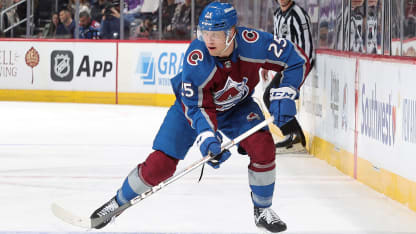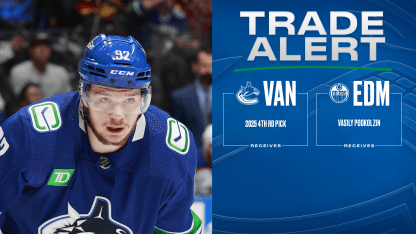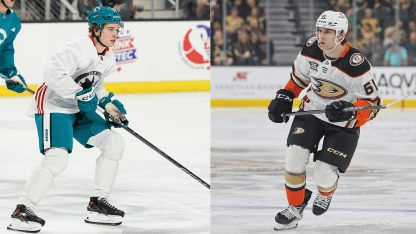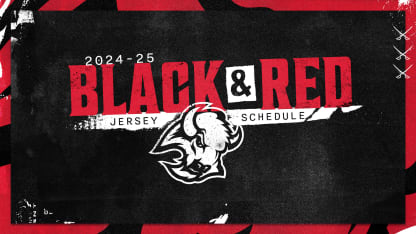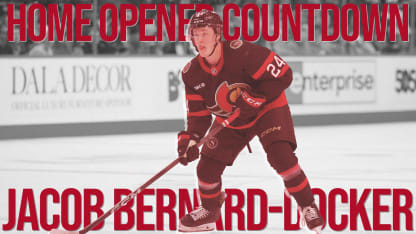Unmasked: Goalies embracing new, unique approaches to success
Unmasked: Goalies embracing new, unique approaches to success
Various methods, philosophies utilized as position continues to evolve

© Brian Fluharty/Getty Images
Welcome to Goalie Week. NHL Social is celebrating goaltending with NHL Goalie Week from Aug. 26 to Sept. 1, reveling in the uniqueness and artistry of the puck-stoppers through the decades. Today, in a special version of NHL.com’s Unmasked, goalie guru Kevin Woodley celebrates the position as it evolves to new heights, bringing more things to love about hockey’s masked men.
There is a lot to love about goalies, but perhaps nothing more than their uniqueness.
Not uniqueness in the old stereotypes surrounding the position, the quirkiness that defined past eras when you could easily argue that purposely putting oneself in front of slap shots wearing padding so thin it could leave you badly bruised or with broken bones was a bit unique. Never mind, the fact there was a time when goalies did not wear masks.
Frozen pucks can still leave a mark, and today’s NHL goalies know well the smell of burning rubber filling their nose like a burnout in the high school parking lot whenever those pucks graze a mask or stick or shoulder pad with enough spin to leave some of that rubber behind.
But the fear factor that was once such a big part of goaltending is thankfully gone now.
The uniqueness is now found in how goalies play a position that never stops evolving.
It is found in the seemingly limitless ways goalies find to get better, whether it’s Nashville Predators goaltending director Mitch Korn bringing medicine balls on the ice for his goalies to hold out in front of them, or Seattle Kraken goalie Joey Daccord using a virtual reality program called NHL Sense Arena to dial in his glove hand between periods.
That quest has been documented here in Unmasked for the past seven years and still it seems each season brings more new ideas and discoveries about a position that exists almost as a sport entirely of its own that is being played within the sport of hockey.
Perhaps that’s because there is no one right way to play goal and few absolutes.
Even as the position roots more deeply in science, with movements broken down biomechanically like the swing of a PGA Tour golfer, there remains an artistry. No two goalies are exactly alike, even as casual observers increasingly lament how they all play in the same manner and “butterfly” has become a style label that every modern goalie wears.
Look closer and the differences are there, even if they no longer stand out as obviously as the more unique brilliance of a Dominik Hasek or Martin Brodeur.
The entire position and decisions made in real time on how to play it is an intricate series of give and take, a sliding scale attempt to balance individual strengths and weaknesses against both the type of attack being deciphered in real time, and how the defense is expected to counter it.
There are decisions to be made at all times by a goalie and they impact each other in an intricate dance.
Does the goalie cut down the angle by moving further out of their crease? Or does he hang back to be able to cover more ice in case the shooter uses the shooting option joining the rush?
Where some goalies might like the idea of getting further out of their crease, reducing how much net that shooter can see behind them — and relying on geometry to make sure any shot is more likely to hit them — others prefer to stay further back in their crease, knowing it gives them more time to react to the puck as it leaves a shooter’s stick blade.
Few exemplified the latter example as obviously as Hall of Fame goalie Henrik Lundqvist, who went from being an aggressive, come-out-then-retreat goalie in Sweden to staying back near his goal line with the New York Rangers under the tutelage of goaltending coach Benoit Allaire. But even Lundqvist’s extremes contained a nod to the “cut down the angle” crowd, at least visually, as he began holding his glove up near his left shoulder to at least visually eliminate some of the net his depth opened in the eyes of a shooter.
Who is the best goalie in each division?
The size of goalies continues to increase, with the League average approaching 6-foot-3 for the first time last season when the average height, according to NHL Stats, was the tallest in League history.
But, even there, some of the individual tendencies run against expectations and assumptions.
Like Lundqvist playing so deep despite being on the small side at 6-foot, or now-retired 6-5 goalie Pekka Rinne not starting to play further back in his crease until seeing how well it worked for backup Juuse Saros, despite Saros being six inches shorter, and then winning the Vezina Trophy.
Every factor, whether physical, technical or mental, that goes into becoming an NHL goalie exists in a different blend, and the origins and ongoing development of those skills can be as fun and fascinating as watching them play on the ice.
Whether it’s Rinne’s famously good glove hand, which he used to scoop low shots off the ice to limit rebounds, having roots in Pesäpallo, the Finnish equivalent of baseball, or Boston Bruins starter Jeremy Swayman unlocking his elite edge work by taking a ballet class at the University of Maine, then continuing with Barre workouts, which his mom teaches in Alaska, right up into the NHL.
Techniques and tactics continue to evolve both for the position in general and for individual goalies, often as they find new voices, whether a private trainer or a new goaltending coach in the NHL, which is one reason you often hear “goalies take longer to develop.”
Linus Ullmark’s rise to 2023 Vezina Trophy winner in Boston is a perfect example.
Adopting the “recoil” philosophy of Bruins goalie coach Bob Essensa by drifting backward slightly even on clean shots in the zone allowed Ullmark to recover laterally more easily if there was a lateral pass instead, or the shot bounced off a leg in front, compared to the “set and square” approach he grew up with in Sweden and used through his first seven NHL seasons.
Those evolutions are often in response to changing attacks, and the combined increase in the skill of players and understanding of the importance of moving the puck side to side to improve the chances of scoring have made things harder than ever for those charged with stopping the puck.
Processing all that fast-changing information in real time is a skill matched in professional sports perhaps only by an NFL quarterback, and every goalie brings a slightly different interpretation of how best to anticipate and manage each different type of attack, adding another sliding scale skill between hedging toward what they think is coming next and always staying centered on the puck to react to it.
Equipment also continues to evolve through science and personal preferences.
Like Lundqvist trying a practice glove that barely closed because of all the extra padding to protect his hand, then sticking with it in games because of how open and big it presented to shooters. Or equipment companies adopting foams that allow goalies to surrender longer rebounds — which are a good thing because they buy the goalie more time to get to his next position — and pucks exploding off the face of a pad get past opponents parked atop the crease before they have time to react.
Even the butterfly label goalies all share, which is more save selection than style, comes with its own set of unique, ever-shifting characteristics that affect how patient a goalie can be before dropping into it, or how far their legs flare out to the side when they do, which impacts how quickly they can move side to side from their knees after they drop.
Few may get into their butterfly now as uniquely as Hasek, who once pointed out in this space that his famous “barrel roll” save, which ended with both arms spread along the ice and his pads in the air, essentially providing inverted butterfly coverage.
But the differences from goalie to goalie remain if you’re willing to look for and understand them, and with them the beautiful tapestry of a position that still refuses to exist in black and white.

